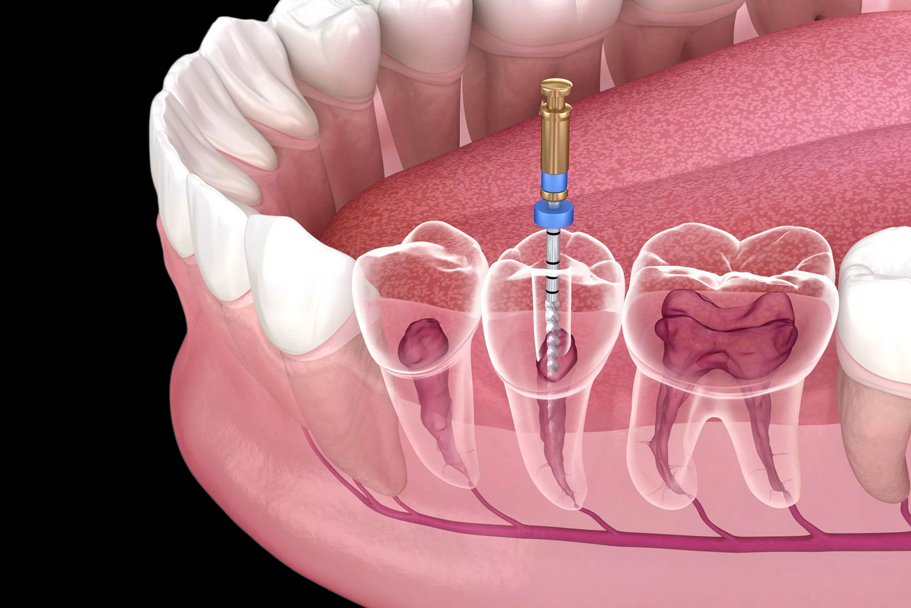ROOT CANAL TREATMENTS
Root canal treatment, often referred to as endodontic therapy, is a dental procedure that can save a damaged or infected tooth from extraction. This highly specialized procedure is designed to address issues within the tooth's innermost structure, the pulp, where infections, trauma, or decay can cause severe discomfort and compromise the tooth's viability. During a root canal, the dentist carefully removes the infected or damaged pulp, cleans and disinfects the interior of the tooth, and seals it to prevent further infection. Root canal treatment is known for relieving pain and preserving natural teeth, allowing patients to maintain their smiles and oral function.

Root canal treatment, also known as endodontic treatment, is a dental procedure used to treat infections or damage to the pulp of a tooth. The pulp is the innermost part of the tooth that contains nerves, blood vessels, and connective tissue. Here are the steps involved in a root canal treatment:
- Initial Assessment:The process begins with a thorough examination of the affected tooth, which may include X-rays to determine the extent of damage and to locate the exact position of the tooth's root canals.
- Local Anesthesia:To ensure the patient's comfort during the procedure, a local anesthetic is administered to numb the area around the affected tooth.
- Isolation of the Tooth:A rubber dam is placed around the tooth to keep it dry and free from saliva, ensuring a sterile environment for the procedure.
- Access to the Pulp Chamber:An access hole is created in the tooth's crown to gain entry to the pulp chamber. This is usually done using a dental drill.
- Removal of Infected Pulp:Specialized instruments, called files, are used to carefully remove the infected or damaged pulp from the pulp chamber and root canals. The canals are shaped to allow for proper filling.
- Cleaning and Disinfection:The interior of the tooth, including the pulp chamber and root canals, is thoroughly cleaned and disinfected to remove any remaining bacteria or debris.
- Filling the Canals (Root Canal Filling):The prepared root canals are filled with a biocompatible material called gutta-percha, which seals off the canals to prevent re-infection.
- Temporary Filling:A temporary filling may be placed in the access hole to protect the tooth while a permanent restoration (such as a crown) is being fabricated.
- Final Restoration:Once the root canal treatment is completed, a permanent restoration, such as a dental crown, is placed over the tooth to provide strength and protection.
- Follow-Up Appointments:The patient is scheduled for follow-up appointments to monitor the healing process and ensure that the tooth is functioning properly.
- Post-Procedure Care:The patient is provided with instructions on post-operative care, including pain management, diet restrictions, and oral hygiene practices.
- Radiographic Evaluation:Follow-up X-rays may be taken to confirm that the root canal treatment was successful and that there are no signs of infection or complications.
It's important to note that root canal treatment is typically performed by an endodontist (a dentist specializing in root canal procedures) or a general dentist with additional training in endodontics. The success of the procedure depends on the thoroughness of the cleaning, proper shaping, and sealing of the root canals, as well as the quality of the final restoration. Early intervention and proper post-operative care are crucial for the long-term success of a root canal treatment.
